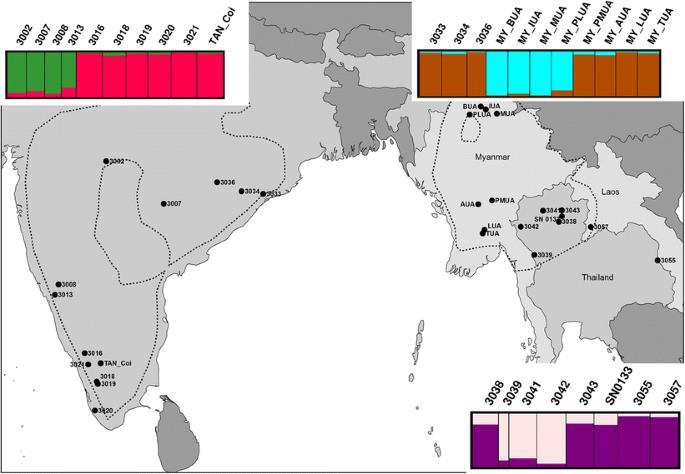
1 minute read
Worldwide translocation of teak
from PNGAF MAGAZINE ISSUE # 9D4D of 15th March 2022 - global timeline forest tree plantations
by rbmccarthy
. Worldwide translocation of teak—origin of landraces and present genetic base.
Hansen, O.K., Changtragoon, S., Ponoy, B. et al Tree Genetics & Genomes 13, 87 (2017). https://doi.org/10.1007/s11295-017-1170-8. Teak (Tectona grandis Linn. f.) is native to India, Myanmar, Thailand, and Laos in South East Asia but was translocated to several countries in Africa and Central and South America during the past century. Today, large areas of plantations are grown outside the species native range. It is speculated that genetic bottlenecks and founder effects combined with new selection pressures under new growing conditions have led to the formation of distinct landraces; this hypothesis is supported by results from international provenance tests. In their study, they applied genetic markers to identify the likely origin of teak grown outside its native range and examine if the landraces show signs of reduced genetic diversity. They found large variation in the level of diversity among landraces, although not larger than that observed among native populations. They concluded that variation in the studied teak landraces probably reflects their areas of genetic origin rather than severe founder effects created during their introduction. The genetic data suggests that the studied landraces originated from either the semi-moist east coast of India, southern Myanmar, or western Thailand. These results indicate that translocation of teak has mainly come from a certain part of the native distribution and that this did not include the widespread natural teak areas of southern, dry interior or western India or northern Myanmar.
Advertisement
Map showing the origin of the 29 natural populations of teak which constitute the reference population in the current study. The six sub-clusters identified via cluster analysis by Hansen et al. (2015) are depicted by colour coding. The dotted line indicates the approximate outer boundaries of the natural distribution of teak








